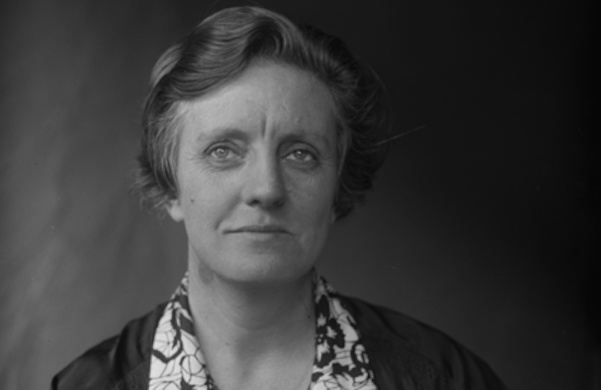The World in a Newspaper Column
Beginning in 1921 and running for more than 30 years, Elsie Robinson won the hearts of 20 million readers every day. Her biography is a work of reclamation — something no one else realized needed to be done.

‘Listen, World! How the Intrepid Elsie Robinson Became America’s Most-Read Woman’
By Julia Scheeres and Allison Gilbert
Seal Press, 352 pages
Elsie Robinson was America’s most-read woman and yet is forgotten — as her biographers note. In her heyday, beginning in 1921 and running for more than 30 years, Robinson won the hearts of 20 million readers every day in Hearst newspapers. No one today — man or woman — commands such an audience, one that engendered Elsie clubs all over the country.
Of course the media landscape has profoundly fragmented, making it virtually impossible for one voice to break through as Robinson did as a social and political commentator, a syndicated advice columnist, a story teller, and so much more. Outspoken but empathetic, she aggressively exhorted her readers to write to her with their criticism, compliments, problems, and advice.
The result is that readers believed they were participating in her column. She told them they would have to organize themselves, be their own columnists, so to speak — an exhilarating call to action to millions who felt underrepresented and without a voice. She spoke for them but said she had to hear their voices in order to succeed.
What did Elsie Robinson write about? Everything: And she put her thoughts not only into her columns but into short stories, poems, and illustrations. No other columnist used pictures and prose to create an entire world — not only for adults but for their children. In short, an Elsie club was for the whole family.
Robinson did not hide that she had come out of a hard time and that she had made her luck and her happiness — as readers could do as well, she believed, and they wanted to believe.
In her 30s, Elsie Robinson was on her own, a woman of the California West, beaten down by her husband’s prim, distinguished New England family. Then she broke out of her corsets and lived in sin with a man fresh out of a mental institution who believed he could strike it rich in a gold mine.
Her lover’s work and life did not pan out (if you will pardon the expression), so Elsie dug into the depths of the earth, becoming a miner in a man’s world, to earn enough to support herself and her ailing son. She drew strength from her need to put life into words — and caught the attention of several newspapermen and then became a Hearst heroine.
This biography includes italicized passages in which Elsie gets to tell her own vivid, heartbreaking, and inspiring story. She never sentimentalizes grief or hardship. She tells readers life is like that, so get on with it — while acknowledging that, as for herself, getting on with it was never easy.
You had to find something, however small, to celebrate in yourself before getting out of your rut. And you were in a rut, Elsie would tell her readers. She knew about ruts: That’s why they kept returning to her column and joined together in clubs celebrating her tough and yet inspiriting view of life.
Only occasionally do these biographers slip into their own rut when they say, for example, “Elsie must have recognized herself in the protagonist of Louisa May Alcott’s 1868 novel Little Women,” or, “Elsie must have felt a rush of disbelief, good fortune, and even pride: after she became Mrs. Christie B. Crowell.”
Leave what “must have” been or felt to the biographical novelists. Elsie Robinson’s story survives very well without forcing it. Biographers actually enhance how much they do know by leaving alone what they don’t.
There are no earlier biographies of Elsie Robinson, and her biographers had to work mightily even in this Age of Google, sifting through paper files and microfilms in libraries, and also depending on Elsie Club members and their clippings. Don’t skip the acknowledgments section of this book, in which the biographers explain, for example, how difficult it was to reconstruct Elsie’s years as a miner.
This biography is a work of reclamation — something no one else knew how to do or realized needed to be done. Often the best biographies are the products of those who can see or remember what the rest of us have forgotten or never knew.
Mr. Rollyson is the author of “To Be a Woman: The Life of Jill Craigie”

